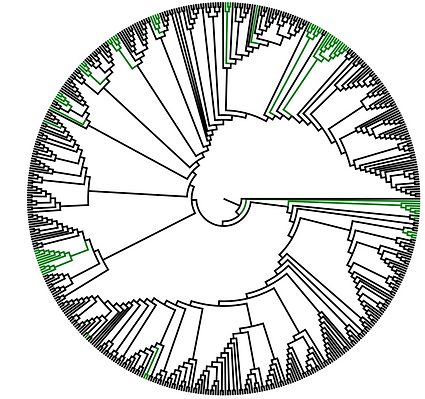
Lichen Systematics
Collections-Based Research and Phylogenetics
My core research priority is to investigate the diversity of lichens, and the underlying evolutionary processes that have led to this. Independently of the group of study and where they are found, my approach assumes that molecular methods, combined with thorough study of morphology, anatomy and ecology, provide the best means of assessing the taxonomic significance of distinct characters observed in species. The classical taxonomist who perceives something new is not always able to tell if the morphological variation observed is inter- or intraspecific. We are now able to use molecular data to evaluate this variation.

MYCOBIONT
ITS ML tree with ca. 500 specimens of Cora. Green tips represent Brazilian samples






Examples of Cora (A, D), Dictyonema (C, F) and Cyphellostereum (E) species. Cartoon (B) and polar (on the left) phylogenetic trees inferring relationships of over 500 specimens of Cora. Brown and blue colors (B) represent two distinct lineages of the photobiont Rhizonema, while green branches (on the left) depict Brazilian clades of Cora (mycobiont).
A B C
D E F

16S Rhizonema ML tree with different colors representing different haplotypes
PHOTOBIONT
Current projects:
- Brazilian species of the Dictyonematinae subtribe (circular tree above, green represents specimens from Brazil)
- Photobiont diversity in pantropical Dictyonematinae
- Brazilian Graphidaceae
- Sulzbacheromyces from South America


